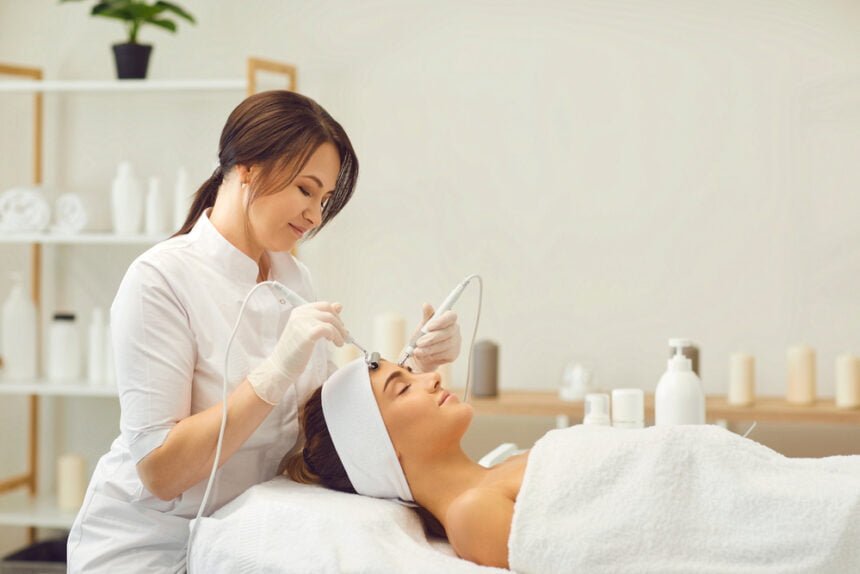When you’re just getting started with aesthetic procedures, you’re probably flooded with questions, fears, and concerns.
Rest assured, you’re not alone. Many first-timers have similar anxieties, and it’s perfectly normal.
This article sheds light on what you should know before your first treatment. The goal is to ease your worries, arm you with knowledge, and help guide your decisions. By understanding the intricacies of these procedures, you’ll be well-prepared to navigate this new journey.
Whether you’re exploring non-invasive treatments or major interventions, knowledge is power. This information is your first step towards a confident and informed decision-making process.
The Different Types Of Aesthetic Procedures
Thanks to constant innovation, aesthetic procedures have become varied in scope and capability. On the one hand, you have surgical procedures such as rhinoplasty or liposuction. These treatments are invasive, require anesthesia, and typically involve a lengthy recovery period. On the other, you’ll find non-surgical treatments like Botox and dermal fillers. These treatments are less invasive with minimal downtime. They can smooth wrinkles, enhance facial features, and rejuvenate your appearance.
There are also several superficial skin treatments, including chemical peels and laser treatments. These address many skin concerns, from acne to damage from aging.
In 2021, the most popular non-surgical cosmetic treatment globally was Botox. Over 7.3 million people got Botox injections that year. Following that, hyaluronic acid procedures and hair removal were the next most common ones.
There’s also no shortage of places where you can get them.
For instance, you might consider visiting a medical spa. This unique setting bridges the gap between traditional day spas and medical clinics, offering a wide range of treatments under the supervision of trained medical staff. Here, you can find a blend of relaxing spa services and medical-grade procedures like laser hair removal, microdermabrasion, and even non-surgical facelifts.
The ideal ones provide a comfortable, serene environment where you can enhance your appearance under the watchful eye of healthcare professionals.
With this variety and complexity, the idea that the ‘best’ procedure isn’t one-size-fits-all rings true. Instead, it’s the one that aligns with your personal goals and health conditions. The smart way forward is to explore all options with an open mind.
Why Proper Consultation And The Right Specialists Matter
Before you arrange for a procedure, a proper consultation is crucial. This initial meeting plays a key role in determining the most suitable treatment. It’s an opportunity to voice your goals, concerns, and questions.
Another crucial step is finding the right specialist. Look for someone who is certified and experienced. This professional should be able to effectively assess your needs, discuss potential outcomes, and ensure your safety.
Remember, your well-being is paramount. Don’t hesitate to ask your specialist about their qualifications, experience, and the procedure itself. By being proactive, you can ensure your journey toward aesthetic enhancement is safe, successful, and satisfying. After all, you’re entrusting them with your appearance and health. So, choose wisely.
Preparing For The Aesthetic Procedure
Preparation is critical to a successful aesthetic procedure. This involves making specific lifestyle changes. You may need to quit smoking, adjust your diet, or pause the intake of certain medications. These steps help ensure a smooth procedure and recovery.
Secondly, you’ll likely undergo pre-procedure tests. These can include blood work or skin evaluations. Also, be ready to disclose your medical history. Your specialist must know about any previous surgeries, allergies, healthcare regimens, or medical conditions you have.
Last but not least, mental preparation is crucial. It’s natural to feel nervous. But remember that knowledge is your best defense against fear. Understand the procedure, know what to expect, and feel confident in your decision. This mindset can make all the difference in your aesthetic journey.
What To Expect During And After The Procedure
Every aesthetic procedure is unique, as is the experience during and after. For instance, you might feel mild discomfort, pressure, or pain during the initial stages. However, anesthetics can minimize them.
After the procedure, the healing process begins. Depending on the treatment, the recovery time can vary. Some treatments require weeks of downtime, while others have virtually none. Most major cosmetic surgeries often take six to 12 weeks to recover from. You might experience side effects, usually temporary, like redness, swelling, or bruising.
Follow-up appointments are a must. They allow your specialist to monitor your recovery, address concerns, and ensure optimal results. Everyone’s body reacts differently, so patience and communication with your specialist are critical during this phase.
Understanding The Risks And Complications
While aesthetic procedures are generally safe, it’s essential to understand that every procedure carries some level of danger. Complications, although rare, can occur. These might include infection, scarring, or unexpected reactions to anesthesia. Major procedures, like plastic surgery, have also caused fatalities, although the risk is less than 1%.
Each procedure comes with its specific set of potential risks and complications. Your health conditions can also influence these factors. It’s crucial to discuss all these possibilities with your specialist to make a fully informed decision.
Don’t shy away from these conversations. They’re an essential part of your aesthetic journey. Understanding the risks, knowing the signs of complications, and staying in close contact with your specialist can ensure a safer and more predictable outcome.
Preparation Is Key
Informed decisions are the cornerstone of any aesthetic journey. With knowledge, you can confidently approach your first procedure.
When done right, it can be a positive, life-enhancing experience. Take your time, do your research, and consult with professionals. These steps aren’t merely suggestions but the blueprint to a successful aesthetic treatment.








-330x220.jpg)
